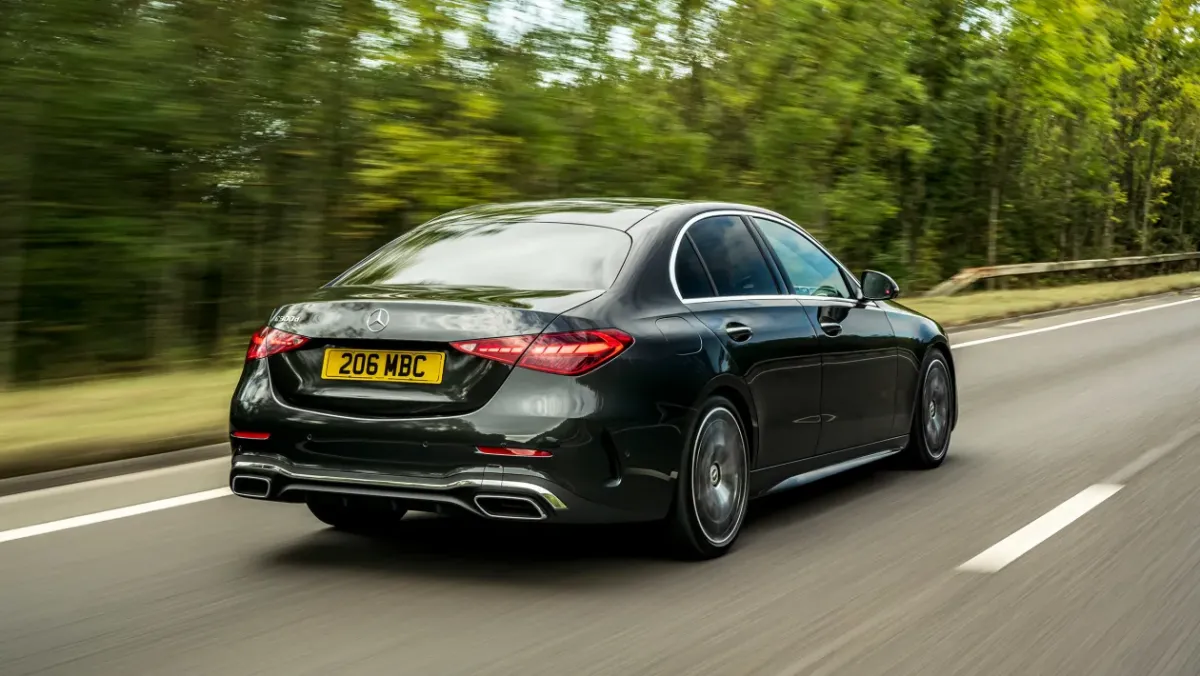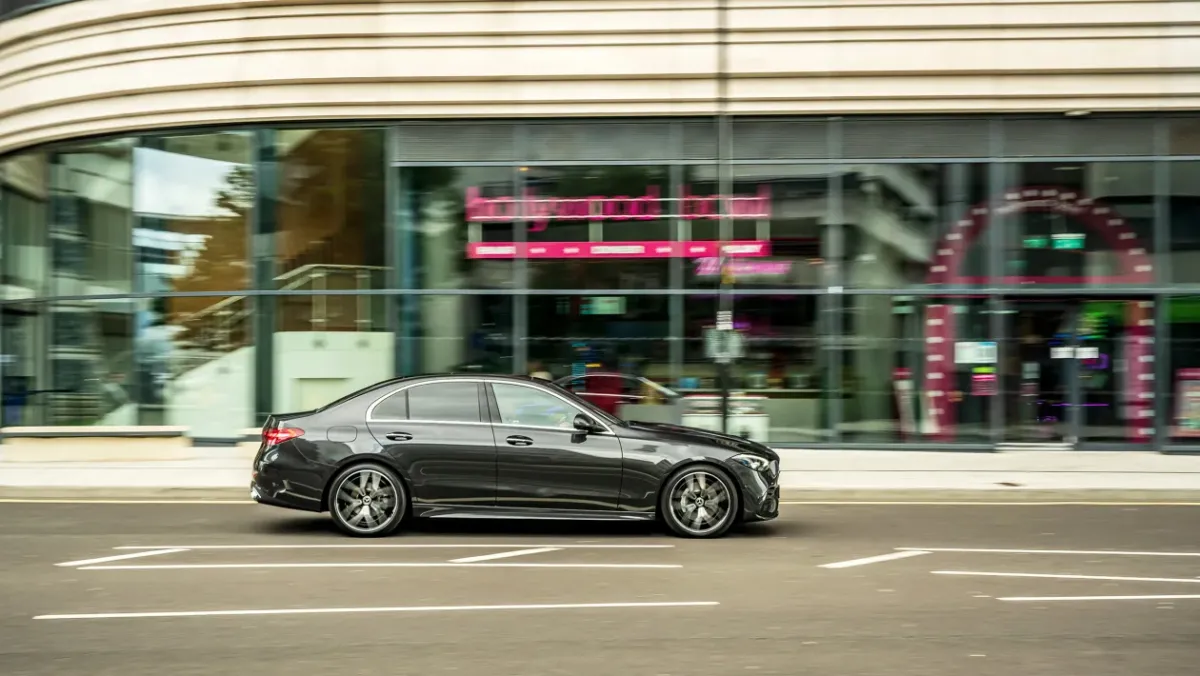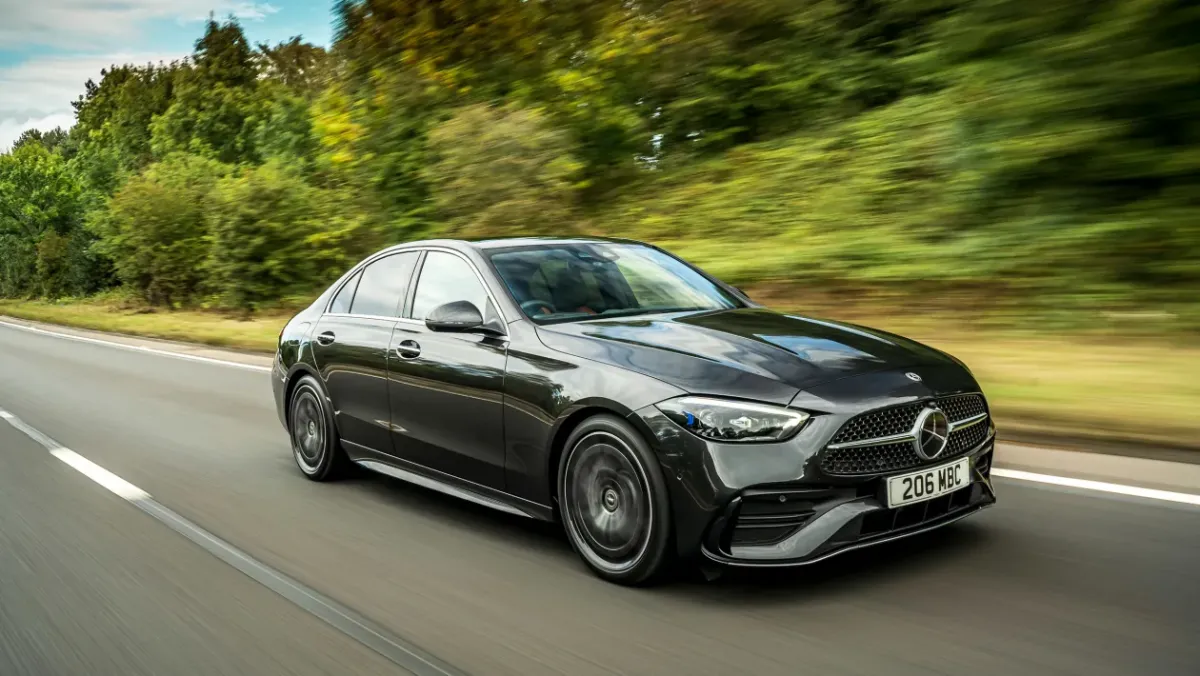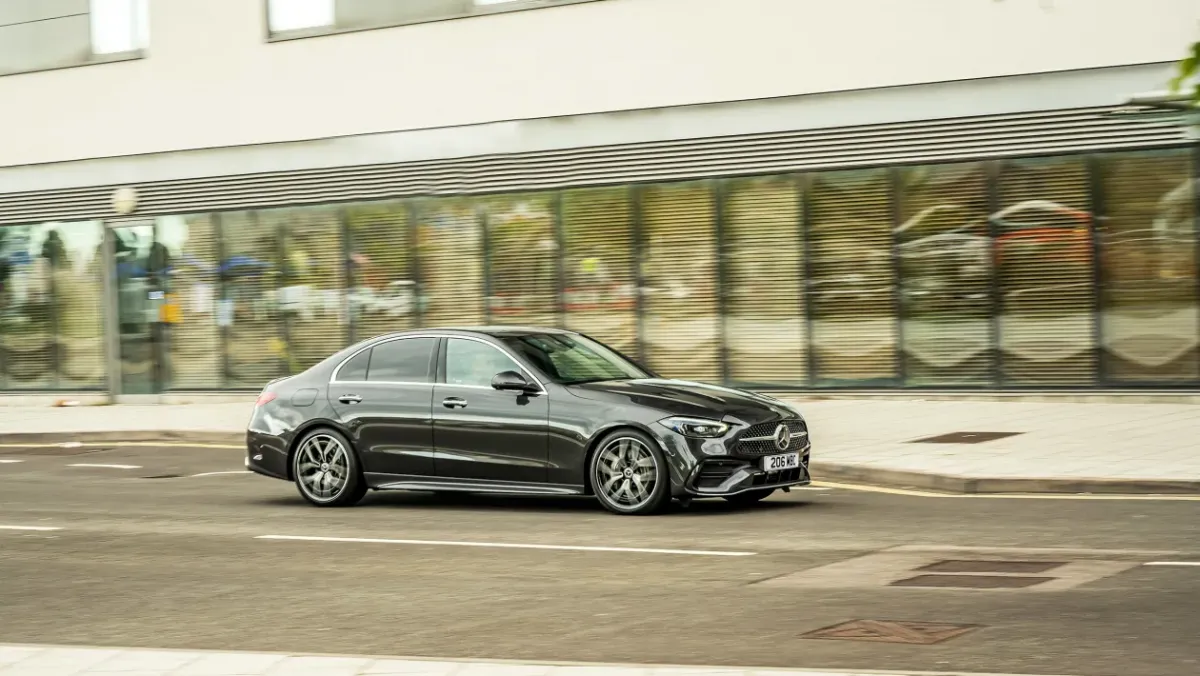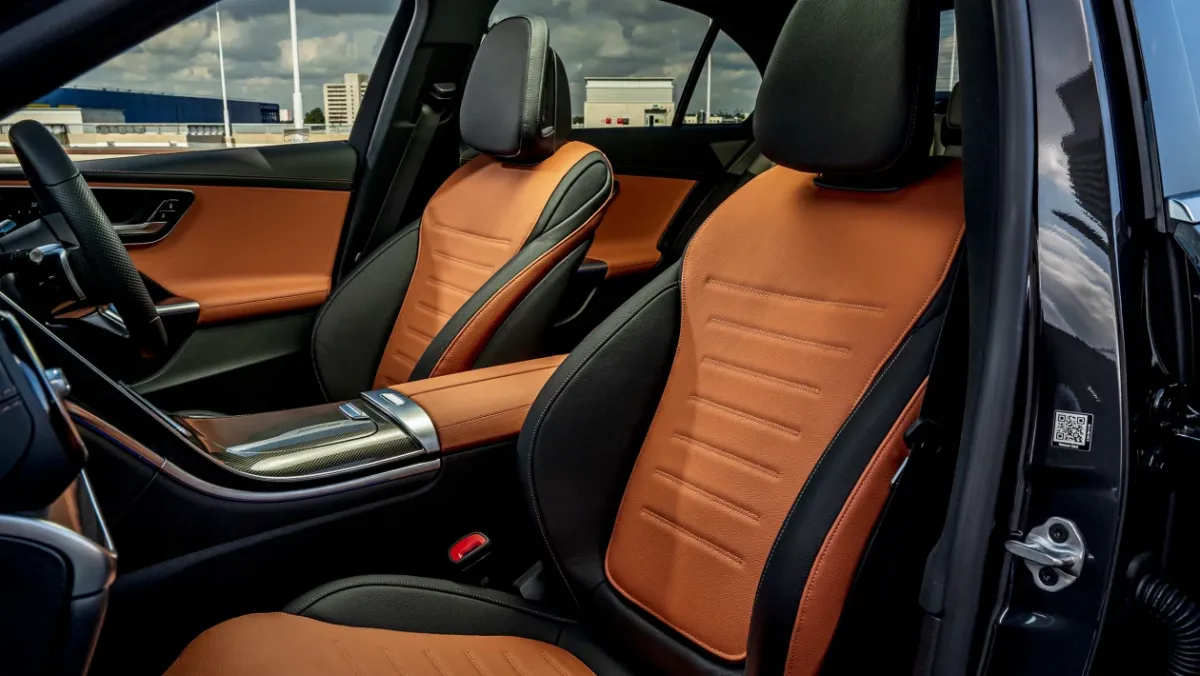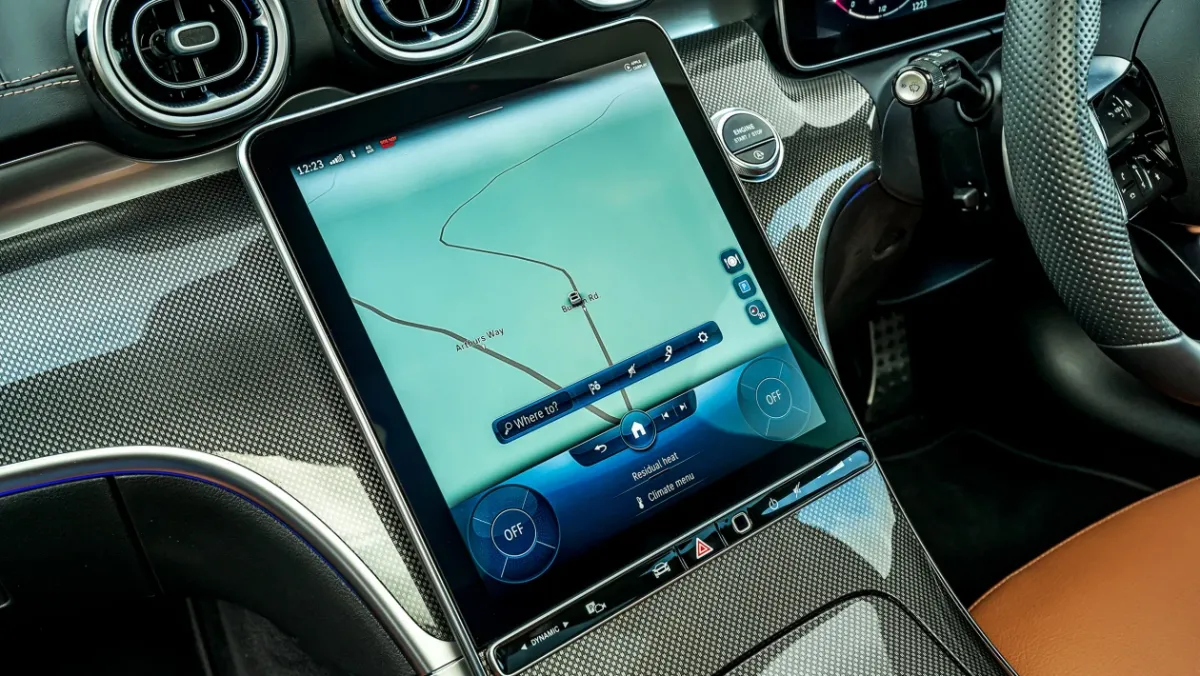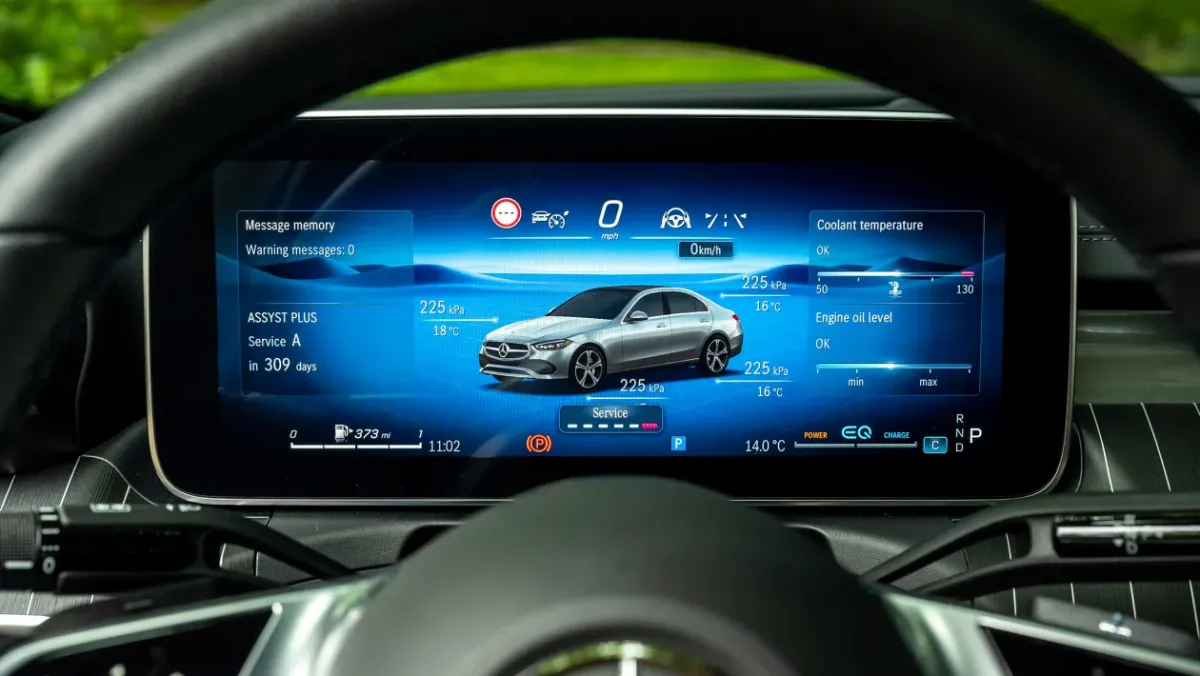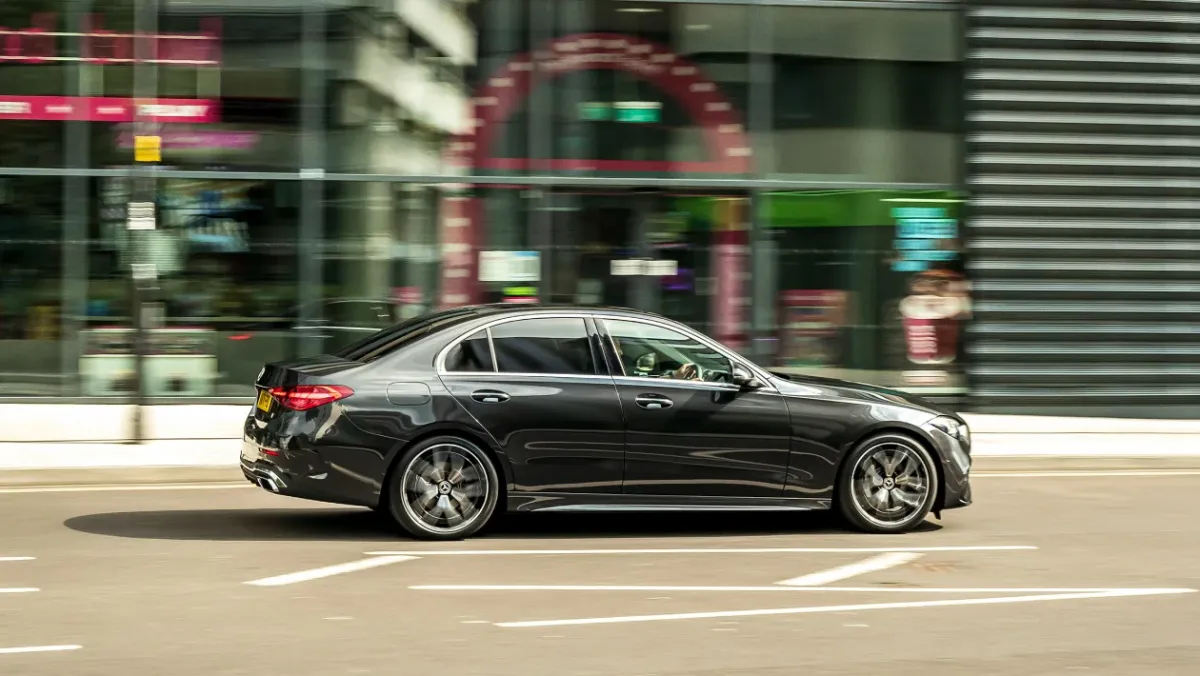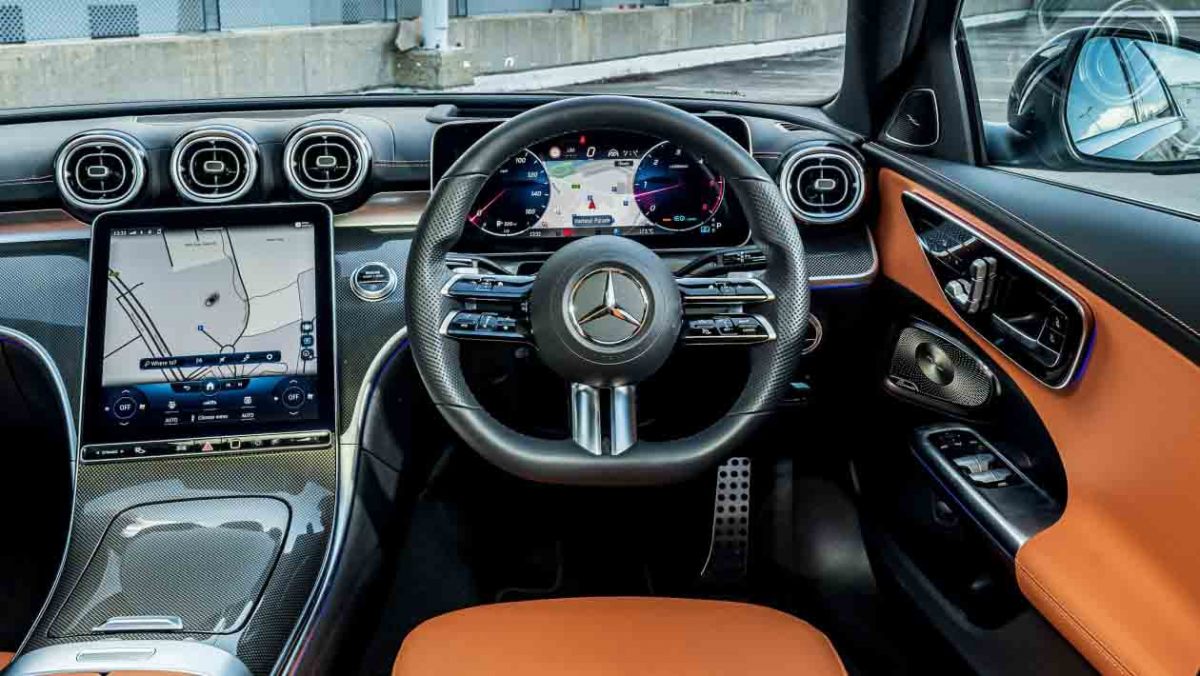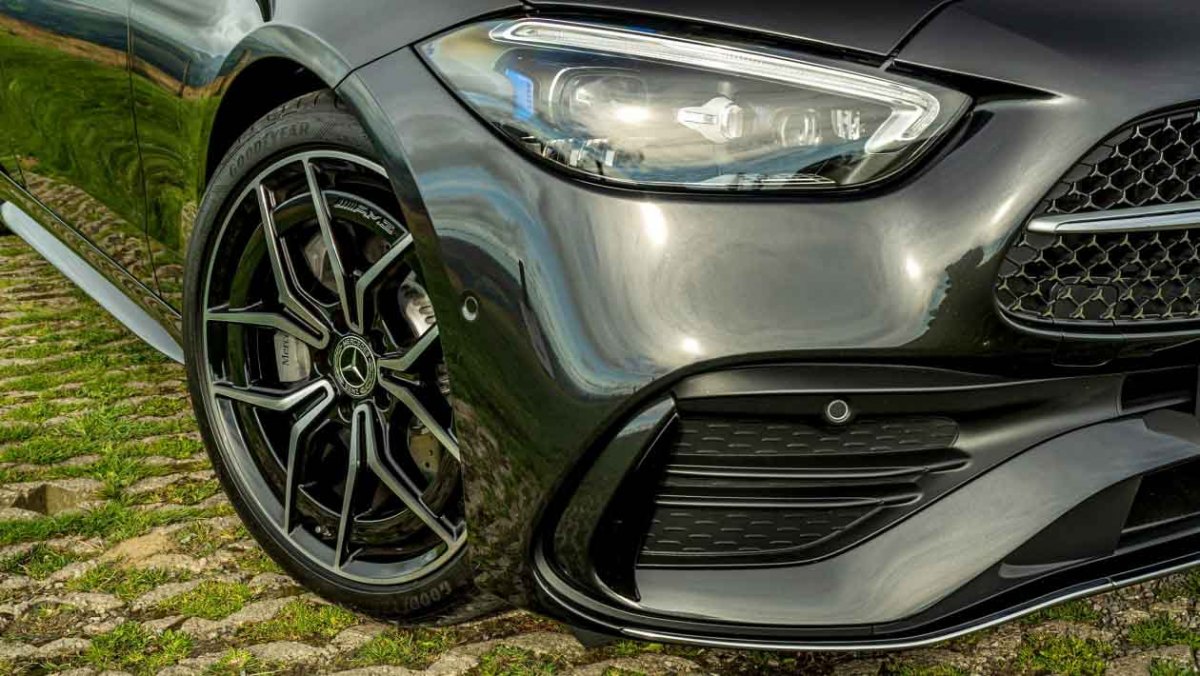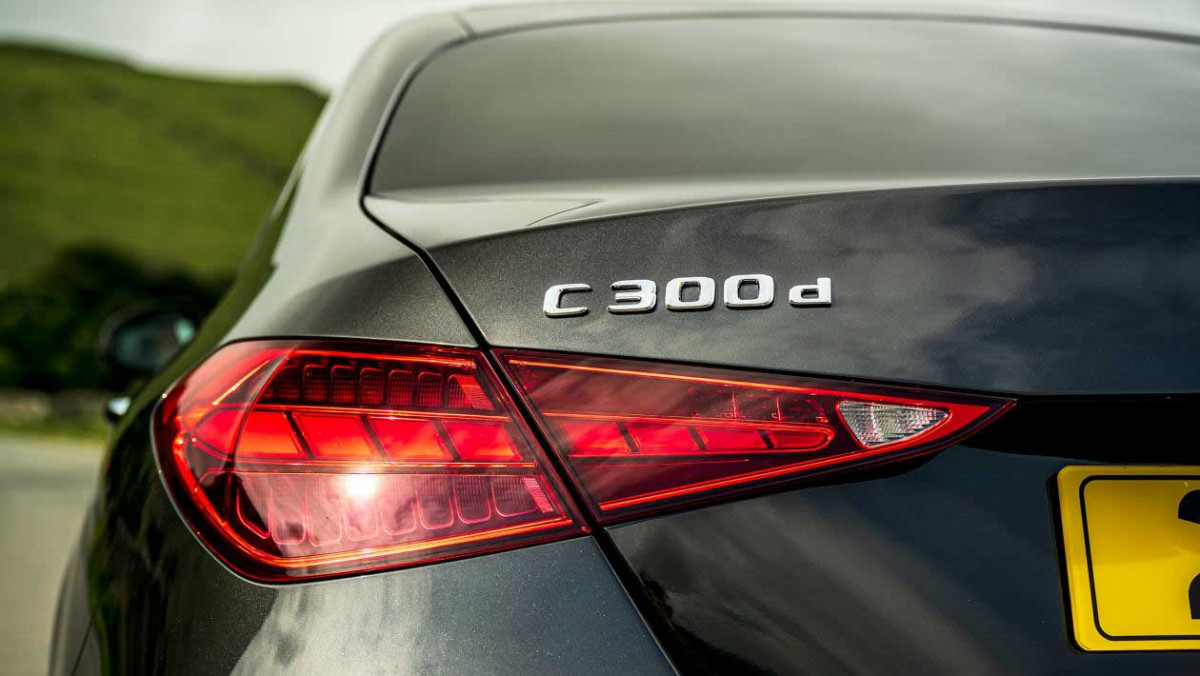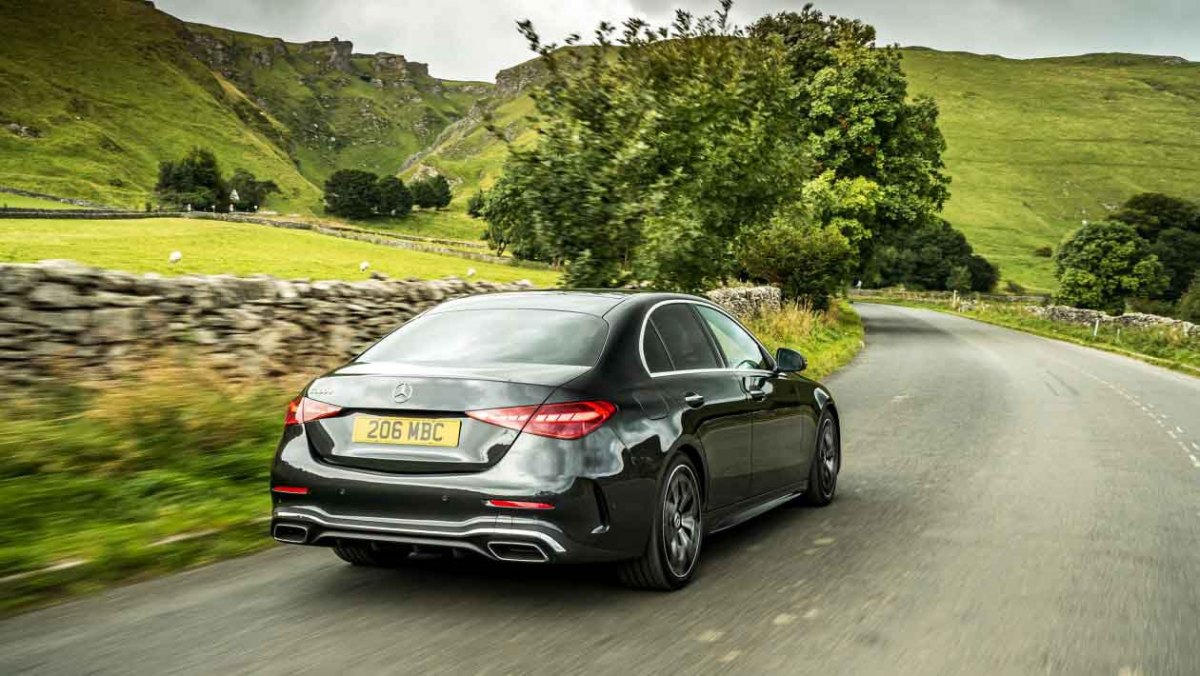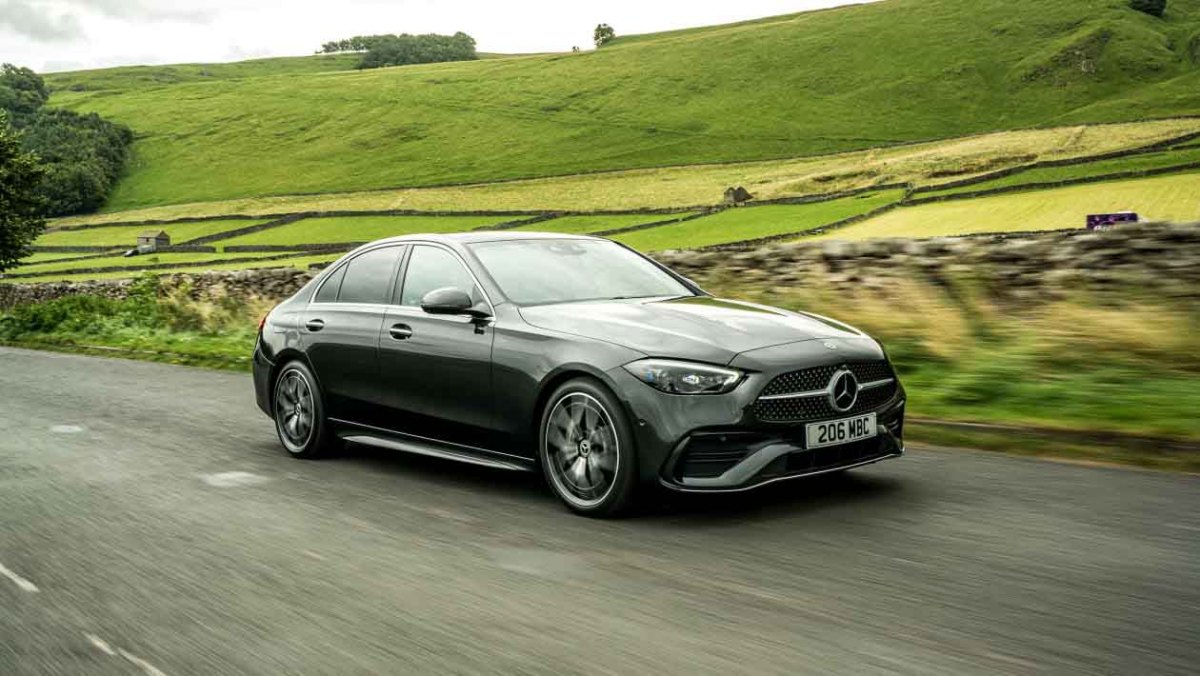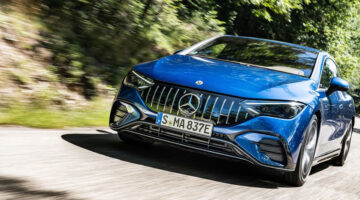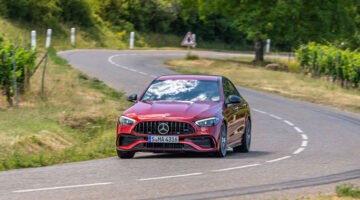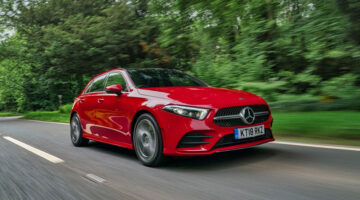Concrete evidence that long-standing engineering garners excellent results. The C-class has never been better
| Chassis is extremely capable, powertrains a big improvement | |
| It’s four cylinders or nothing for this generation, there’s a lot of tinsel to wade through |
Amongst the myriad of new car varieties being churned out by the industry at large thanks to an automotive ecosystem moving towards electrification, there’s something very comforting about an all-new version of a model that’s been a constant for nearly 40 years. The Mercedes C-class is one such car, spiritually unchanged over its lifetime, and still the ‘real’ entry point to the Mercedes range.
But to confuse this steadfastness with a lack of innovation would be a mistake, because the C-class’s evolutionary path has meant that almost all of its rough edges have been shaved off to become, in this fifth generation, a frankly brilliant compact executive saloon and estate that operate over and above their mandates, and probably their price points too.
Some concessions have been made to the current automotive climate – it’s only available with four-cylinder engines for instance, and hybridisation has now been applied across all models, whether that be in mild or plug-in forms. Yet, for the first time the use of electrification is starting to yield results, as real progress has been made in terms of efficiency and integration to a point where you would miss it if it were gone. The mainstream car world might be turning to pure electric, but right now there are few better ways of getting around than in a C-class.
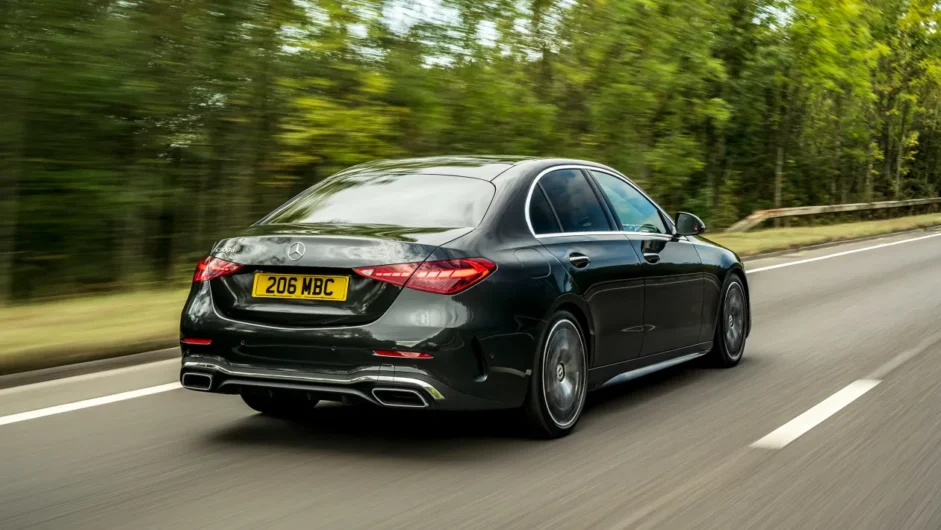
Prices, specs and rivals:
The C-class might only be available with four-cylinder engines in this generation, but the pricing structure hasn’t deviated from the current trend of inflated list prices due to a high take-up of leasing. So far, regional models are limited to a total of five powertrain variations in either Sport or AMG Line trims, the latter then having additional Premium and Premium Plus packages available depending on the powertrain.
Prices for the base C200 petrol in Sport trim start at £38,785, with the C200d costing a further £2000. C300, C300e plug-in hybrid and C300d models are only available in AMG Line trim starting at £43,500, £44,895 and £45,925 respectively, making the plug-in hybrid (inexplicably) less expensive than the diesel. All Sport and AMG Line cars come with a solid specification, including Merc’s big new touchscreen interface, digital dial pack, heated leather seats, LED headlights and a reversing camera. AMG Line cars up the exterior jewellery with new bumpers, bigger 18-inch wheels and some extra brightwork. The interior also picks up an upholstered dash and privacy glass.
Models fitted with the Premium pack cost an extra £2750, which ups the wheel size another inch to 19 inches, and upgrades components of the interior ambient lighting, MBUX interface and parking assistant. The big gain is an upgrade to Merc’s fantastic Digital Light headlights that first debuted on the new S-class. The Premium Plus will add a further £3450, bringing a different 19-inch wheel design, panoramic sunroof, a huge head-up display and four-zone climate control. Estate models are available in all the same trims and options at a £1635 premium.
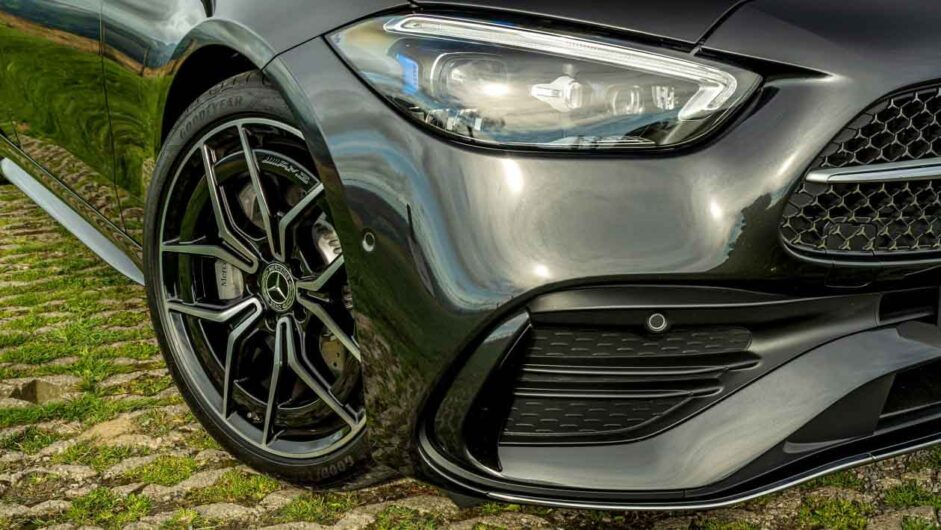
As for rivals? Well, there’s the BMW 3-series which mimics the C-class’s specification in large part with a £1k or so price advantage. The 3-series’ mild-hybrid electrification isn’t as widespread, but it has a six-cylinder M340i at the top of the range to compensate. Mercedes will have a mid-level AMG model to rival the M Performance BMW eventually, but it’ll run a four-cylinder petrol, again with hybrid assistance. Plug-in C300e versus plug-in 330e runs things close in terms of power and performance, but the Mercedes has a much longer all-electric range at around 112 kilometers on the WLTP cycle, double that of the BMW.
Audi’s A4 enters the ring with one arm behind its back as it’s a model that’s coming to the end of its lifespan, explaining a total lack of any hybridisation. A4s drive well enough and their interiors are still superbly built, but the BMW and Merc have opened up considerable leads in both areas. If you’re into a big six-cylinder diesel, though, an A4 3.0 TDI remains an all-rounder that’s tough to beat.
Alfa Romeo’s Giulia is still fantastic to drive, but now feels multiple generations behind in regards to tech and powertrains, and the same could be said of the Jaguar XE and the Genesis G70.
Engine, gearbox and technical highlights
After two generations of the C-class being topped with V8 engines, and V6s playing their role in the middle, it’s fair to say there were a few raised eyebrows when Mercedes confirmed the W206 would be four-cylinder only. While the demise of AMG’s V8 was no surprise due to stricter emissions regulations, it was the packaging that killed off the sixes as Merc’s latest generation swapped out a V6 layout for an in-line six.
In order to fit the new powertrain, Mercedes confirmed that it would have required an extra 50mm of length in the engine bay, space the engineers weren’t willing to compromise on for the sake of what would inherently have been a niche powertrain option.
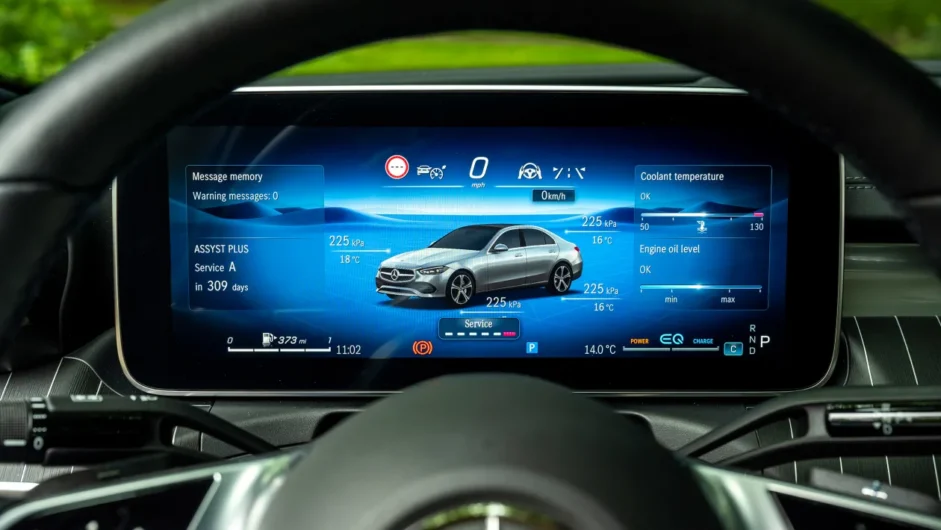
To compensate, both of the new C-class’s four-cylinder engines are available in two outputs, with Merc’s EQ Boost mild-hybrid system applied to petrols and diesels. There’s also a plug-in C300e upping the size of the electric motor and battery pack. The MHEV’s EQ Boost motor is one we’ve seen before, being an integrated starter motor and generator which adds 20bhp and 147lb ft to the figure sheet.
> Mercedes-AMG C63 S (W205) review
Base-level C200 models are rated at 201bhp and 221lb ft of torque, with C300 models upping this to 254bhp and 295lb ft. Diesel engines are still on the menu too, with the C220d coming with 197bhp and 324lb ft and the top-spec C300d hitting with a very impressive 261bhp and 406lb ft. The plug-in hybrid model pairs the lesser 201bhp four-cylinder with a more potent 127bhp electric motor to create a 328bhp combined peak power and 406lb ft, making it the most powerful non-AMG variant.
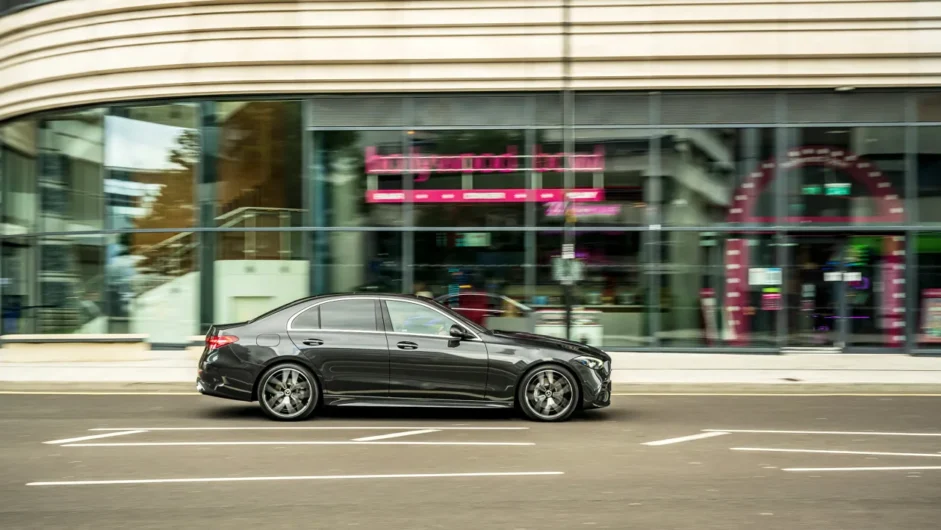
The compromise in the C300e is weight. Most MHEV C-class models weigh around 1600 to 1700kg, but this shoots right up to a staggering 2005kg for the plug-in – the compromise for such an impressive all-electric range. The driver of this astonishing weight penalty is the comparatively huge 25.4kWh battery pack, some 4kWh bigger than the one in an original BMW i3, for context.
All-wheel-drive variants are still to come, as are the inevitable AMGs. All C-classes also utilise a nine-speed automatic transmission that’s sharp, responsive and brilliantly keyed in to the increasingly complicated powertrain – calibration really is top-notch.
Performance and 0-100
Thanks in part to that EQ Boost motor, all C-class models are fairly rapid considering their positioning and efficiency. At its slowest, the C200 petrol and C220d diesel both hit 100kph from rest in 7.3sec, with the C300 petrol dropping this to 6.0sec. Plug-in models are slightly slower on account of their extra weight at 6.1sec. For now the fastest C-class is the C300d which will do the sprint in 5.7sec; this is a four-cylinder turbo diesel rated at over 5.1L/100km on the WLTP combined cycle – remarkable stuff.
On the road, all of this electrification is brilliantly integrated – finally, these sorts of mild-hybrid systems are starting to feel like essential parts of the powertrain, rather than a parasite on the system dragging regen out of the brakes with no discernible benefit. The C300d feels particularly rapid, with excellent response from the turbo and the EQ Boost motor imperceptibly filling in torque gaps at low rpm and during gear changes.
> Mercedes-AMG C43 Coupe (W205) review
The C300d’s performance makes more sense when you look at the figures, with the diesel producing 406lb ft, supplemented by another 143lb ft from the electric motor. While these two figures can’t be simply added together to come up with a huge single figure, it puts into perspective how effortless it feels at any engine speed. Aside from some subtle vibration at idle the powertrain is also extremely refined, with none of the raucousness evident in previous generations of C-class diesels.
Ride and handling
Typically, where ride and handling are concerned, the BMW 3-series has always had the upper hand. And while the gap has been pretty vast at points, (E46 v W203 anyone?) it hasn’t just been reduced in this latest generation, it’s almost entirely eliminated. Both have their pros and cons, and inherently the C-class does feel to have a slightly more laid-back set-up, but that’s backed up by real suppleness and a sense of calm in its suspension tuning.
As such, the ride quality is very impressive, with only the large 19-inch wheels giving a feeling of knubbliness over rough road sections. Unfortunately it’s not something that improves with speed, with shudders still finding their way into the cabin. In this respect, a 3-series’ extra lateral stability and slightly better wheel control have the edge, but the roles are reversed in regards to steering.
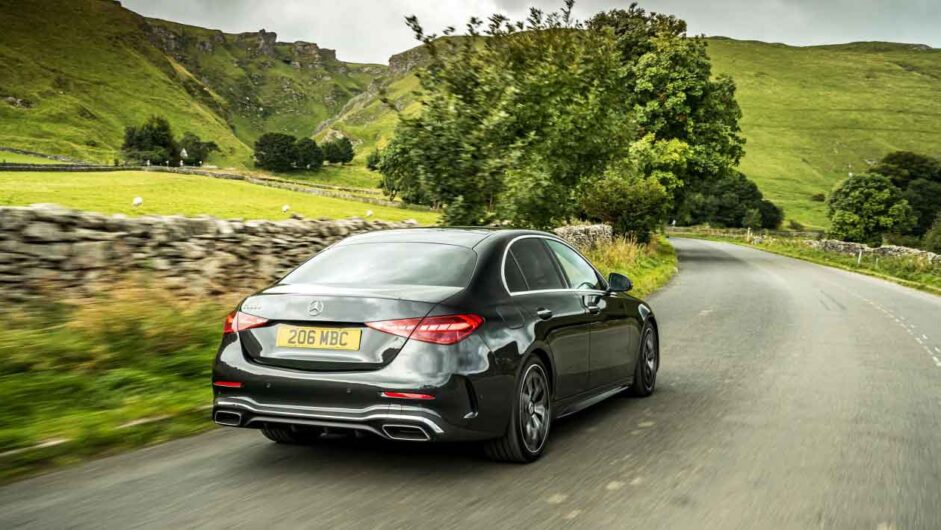
While the racks are light on both cars, the Mercedes has just a touch more accuracy and precision away from the straight ahead, plus a more natural build-up of resistance as speeds rise. The steering ratio is also much quicker than it used to be, and while it feels uncomfortable in larger Merc models, the C-class’s impressive body control and resilient front end can carry it.
In fact, front-end grip is extremely impressive for something with so little performance bias, the car often wiggling its tail under power without excess provocation – the C300d’s huge torque figure explains this tendency. Enter a corner and the chassis feels well balanced and agile, no doubt an advantage of specifically designing the whole front end to only cater for a four-cylinder engine.
All this bodes extremely well for future AMG models, and while these are likely to utilise all-wheel drive, the lesser C-class models are confirmation that Mercedes hasn’t held back on the chassis engineering for this latest generation.
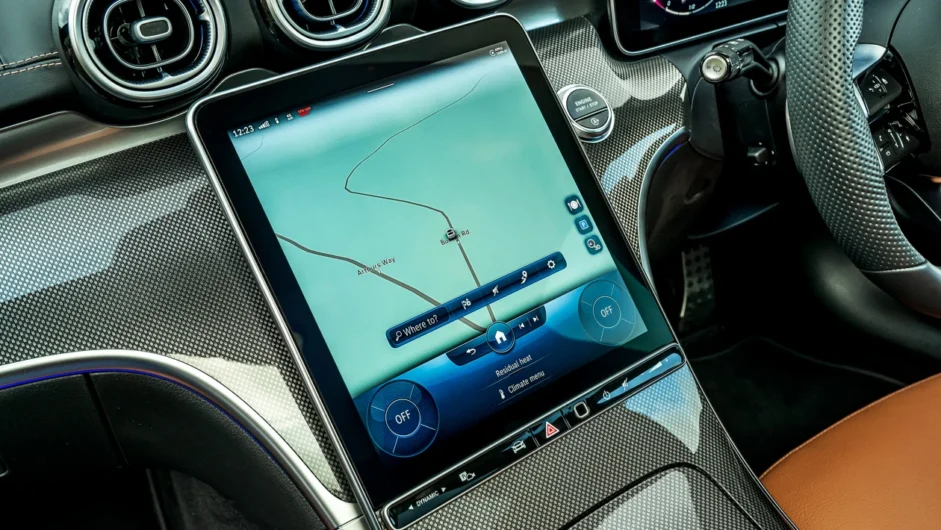
Basics in regards to seating position and visibility are fine, although the driver’s seat could sink a little lower, while the thick steering wheel rim is also quickly closing the gap to the BMW’s in terms of annoyance, feeling a bit overstuffed and obstructive.
There’s good overall brake feel, and while the pedal is soft and comes with a sizeable dead zone at the top of its travel, once you’re into meat of it the brakes wake up and remain consistent regardless of whether the regenerative braking system is pulling energy out or not.
Overall, the C-class drives better than it needs to considering the target audience – it feels like a car that’s been in continual development with a clear mandate for the best part of four decades.
L/100km and running costs
Another bonus of the C-class’s total electrification is some pretty solid L/100km figures across the board. At its least efficient the C300 will still claim 6.7L/100km on the WLTP cycle, with the C200 rising to 6.4L/100km.
Diesels are very impressive, considering both the size of car they need to motivate and the ease with which they do so. The C220d’s headline 4.6L/100km is particularly striking, and compares favourably to the BMW 320d’s 5.1 to 4.6L/100km. The top-spec C300d compromises only slightly with a 5.1L/100km rating, and after a few days of driving on urban roads and fuel-sapping dual carriageway A-roads dotted with roundabouts, we found it drawing on 5.6L/100km. On a constant motorway, we have no doubt it’ll reach its official claims.
Running costs are becoming less of an issue since the advent of leasing and personal finance, but the Merc’s strong residuals make monthly payments extremely cost-effective considering how much car you’re getting.
Interior and tech
Merc’s ability to trickle down cutting-edge technology to its mainstream models is nothing short of amazing. When you compare the interior of this new model to that of the much bigger and much more expensive S-class, the similarities between the two are uncanny. Never has the gap between the two felt closer, and not just in terms of toys and trinkets, but material and build quality too.
For the first time in generations the interior’s basic layout almost directly aligns with that of the new S-class, sharing the same 11.4-inch central touchscreen and 12.3-inch driver display. Both are bright, responsive and clear, and while the MBUX infotainment system can still frustrate, it’s far more useable with so much touchscreen real estate to work with. Material quality is also very good – the synthetic leather trim on the dash, door cards and centre console feels top notch, making the whole interior feel much more upmarket than rivals from BMW and Audi.
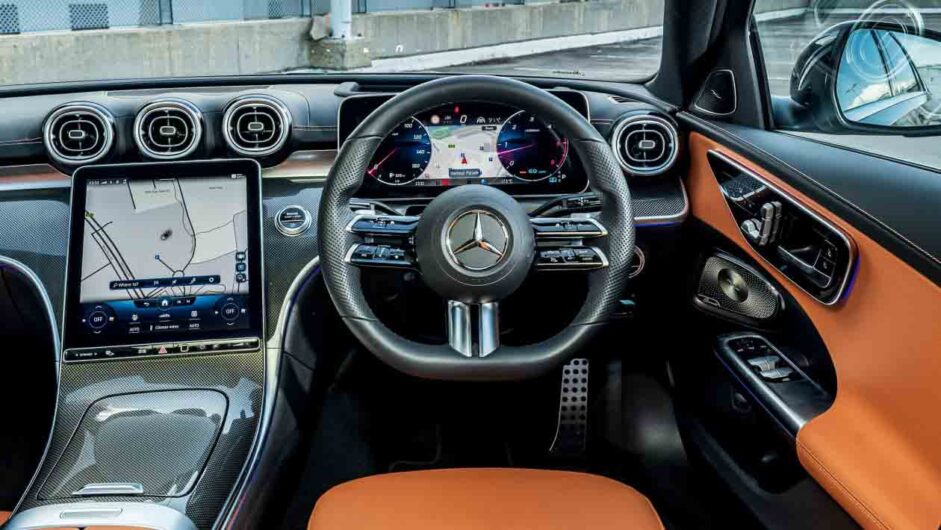
Unfortunately, not all is so bright with the interior, as alongside this strong foundation is a level of tinsel that varies between mildly annoying and obstructive. The steering wheel controls take a lot of time to acclimatise to, and you end up often accidentally brushing the touch-sensitive controls that could set off any vast variety of functions.
There’s no volume knob, instead a tiny slider does that job (badly, we might add) and completing even simple tasks does take your eyes off the road for too long, despite the simplified menu structure. And if you’re a driver that likes to keep the interior dark and cockpit-like, the technicolour interior lighting combined with the sheer size of the displays makes it a glaring experience, even when the brightness is turned right down.
Design
When Bruno Sacco oversaw the original W201 190E, its job was to channel the robust and hewn feeling of larger models into a smaller package. Over the last few generations Mercedes returned to this notion, and this W206 is no exception. The new C-class’s surfacing, detailing and proportions are so well synced with those of larger models such as the S-class you have to do a real double take to make sure you’re looking at the right model.
Yet in place of Sacco’s brutalist forms, Merc’s new design language under the leadership of Gorden Wagener is perhaps less successful all-round. While the surfacing is much improved, with a simple and restrained style, the C-class’s detailing is more contrived. A majority of region models will be fitted with the AMG Line package, which features a dramatic downturn to the grille that almost pinches at its extremes – it’s more catfish than aggressor.
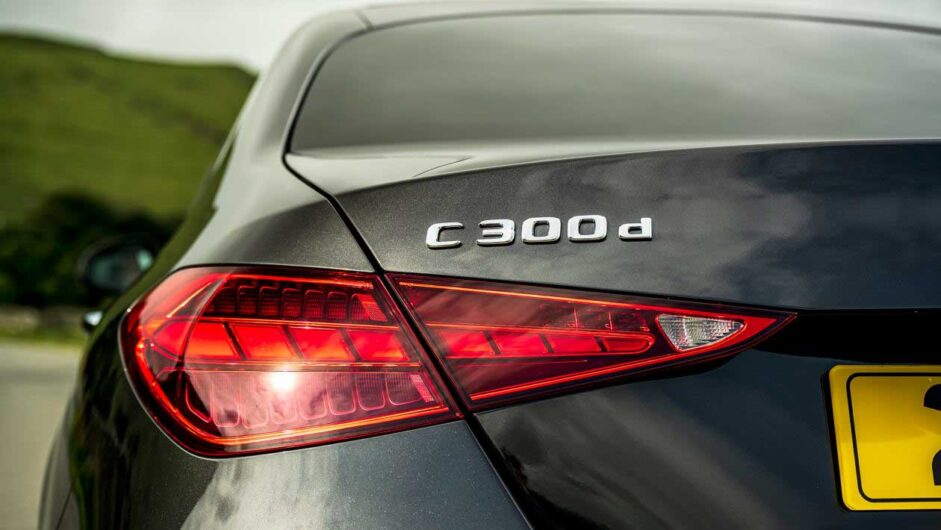
Mercedes’ obsession with using its own insignia as a base for patterned texture has also made its way onto local-market C-classes, with the main three-pointed star (which also now houses the integrated radar system) joined by a grid of tiny repeats inside the grille opening. It’s all a bit garish and frankly just too over the top.
Overlook these occasional lapses in taste, though, and the new C-class fundamentally rests on its elegant proportions, sophisticated surfacing and crisp lighting front and rear. A definite shout-out must also go to the Digital Light LED headlights which are simply brilliant. The light emitted isn’t any brighter than that of other systems, necessarily, but the clarity and the software behind the anti-dazzle feature on automatic full beam is not just excellent, it’s also quite entertaining to watch from the driver’s seat at night.
This article originally appeared at evo.co.uk
Copyright © evo UK, Autovia Publishing

